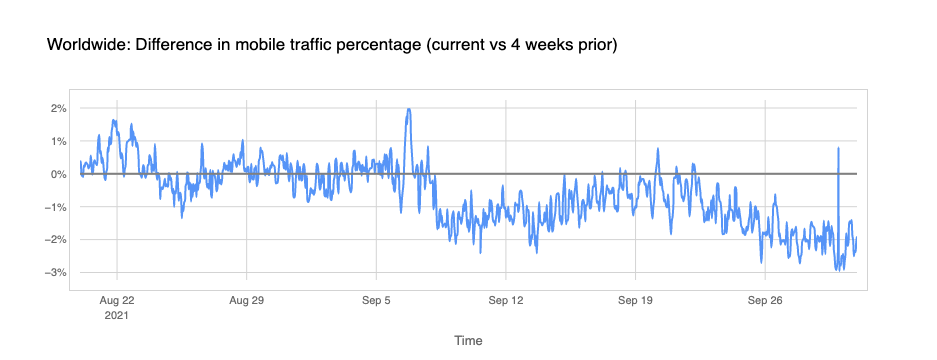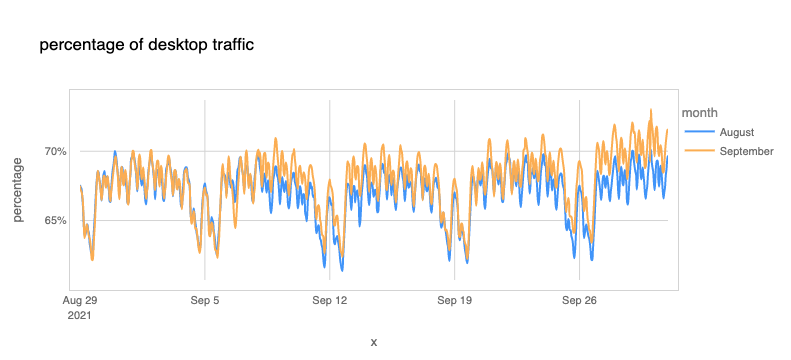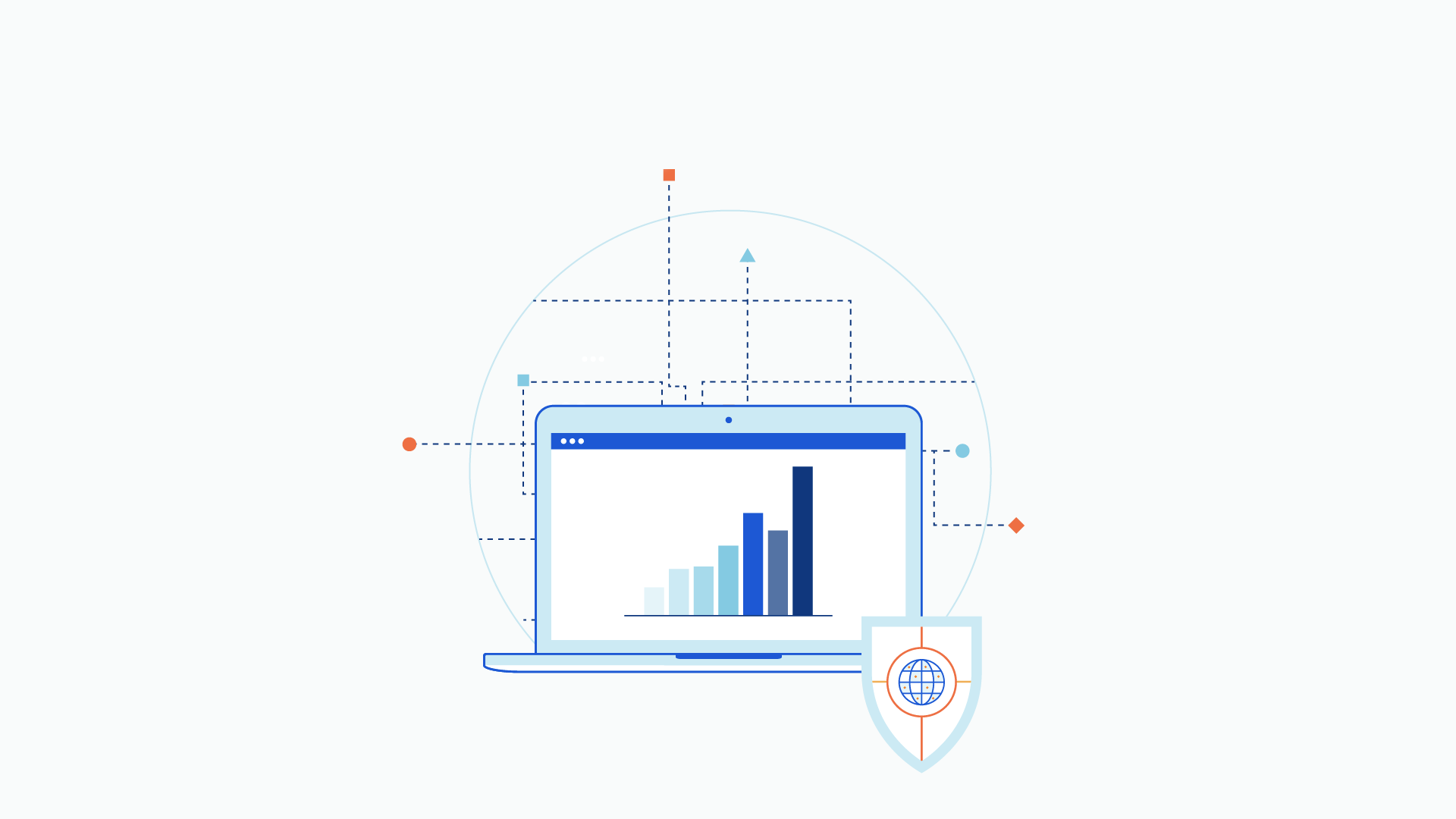Cloud May See More AI, Face Increased Geopolitical Friction
Analysts at Gartner and Forrester respectively see the next few years bringing wider use of automation and elevated government involvement in the cloud sector.Tier 1 Carriers Performance Report: October, 2021
The post Tier 1 Carriers Performance Report: October, 2021 appeared first on Noction.
When students go back to school mobile usage goes down


For many (especially in the Northern Hemisphere, where about 87% of humans live), September is the “get back to school” (or work) month after a summer break and that also reflects changes in the Internet traffic, particularly in mobile usage.
Looking at our data (you can see many of these insights in Cloudflare Radar) there’s a global trend: mobile traffic lost importance (compared with desktop traffic) in September. The next chart shows there was less percentage of Internet traffic from mobile devices after Monday, September 6, 2021, with a difference of -2% in some days, compared with the previous four weeks (August), and in late September it’s more than -3%.

We can also see that the percentage of desktop traffic increased in September compared to August (we compare here to complete weeks between both months because there are significant differences between weekdays and weekends).

A few of weeks ago, we saw there are considerable differences between countries regarding the importance of mobile usage. Getting back to work (or office hours) usually means an increase in desktop traffic. In that blog we highlighted the advantages that mobile devices brought to developing countries — many had their first contact with Continue reading
Video: How Can You Master Public Cloud Networking?
If you’re a regular reader of this blog, you’ve probably realized there’s still need for networking in public clouds, and mastering it requires slightly different set of skills. What could you as a networking engineer to get fluent in this different world? I collected a few hints in the last video in Introduction to Cloud Computing webinar.
Video: How Can You Master Public Cloud Networking?
If you’re a regular reader of this blog, you’ve probably realized there’s still need for networking in public clouds, and mastering it requires slightly different set of skills. What could you as a networking engineer to get fluent in this different world? I collected a few hints in the last video in Introduction to Cloud Computing webinar.
Hedge 107: Career Advice with Terry Slattery
Whether you’re just starting in your technology career, or you’re an old hand who likes to go back to basics and understand how to move forward in your career, this episode of the Hedge is for you. Terry Slattery joins Tom Ammon and Russ White to discuss the things you can do to build a successful career as in the world of network engineering.
Cybersecurity Can Be Made Agile Using a Zero-Shot AI Approach
Zero-shot AI can function as an almost omnipresent figure that’s constantly analyzing logs, network traffic, and user actions to scan for irregularities.IPv6 Buzz 088: Host OS IPv6 Addresses – What’s Up With That?
In this episode of IPv6 Buzz we chat about IPv6 addresses on host OSes: the different types, how they are formed, what they look like, how to tell them apart, and how they are used.
The post IPv6 Buzz 088: Host OS IPv6 Addresses – What’s Up With That? appeared first on Packet Pushers.
IPv6 Buzz 088: Host OS IPv6 Addresses – What’s Up With That?
In this episode of IPv6 Buzz we chat about IPv6 addresses on host OSes: the different types, how they are formed, what they look like, how to tell them apart, and how they are used.DDoS Attack Trends for Q3 2021


The third quarter of 2021 was a busy quarter for DDoS attackers. Cloudflare observed and mitigated record-setting HTTP DDoS attacks, terabit-strong network-layer attacks, one of the largest botnets ever deployed (Meris), and more recently, ransom DDoS attacks on voice over IP (VoIP) service providers and their network infrastructure around the world.
Here’s a summary of the trends observed in Q3 ‘21:
Application-layer (L7) DDoS attack trends:
- For the second consecutive quarter in 2021, US-based companies were the most targeted in the world.
- For the first time in 2021, attacks on UK-based and Canada-based companies skyrocketed, making them the second and third most targeted countries, respectively.
- Attacks on Computer Software, Gaming/ Gambling, IT, and Internet companies increased by an average of 573% compared to the previous quarter.
- Meris, one of the most powerful botnets in history, aided in launching DDoS campaigns across various industries and countries.
Network-layer (L3/4) DDoS attack trends:
- DDoS attacks increased by 44% worldwide compared to the previous quarter.
- The Middle East and Africa recorded the largest average attack increase of approximately 80%.
- Morocco recorded the highest DDoS activity in the third quarter globally — three out of every 100 packets were part of a DDoS Continue reading
Heavy Strategy 012: Professional Development in Infrastructure Technology
A rarely covered topic in technology is professional development. Other careers have extensive programs to ensure practitioners develop and maintain a wide range of skills but this principle is rare in IT.
The post Heavy Strategy 012: Professional Development in Infrastructure Technology appeared first on Packet Pushers.